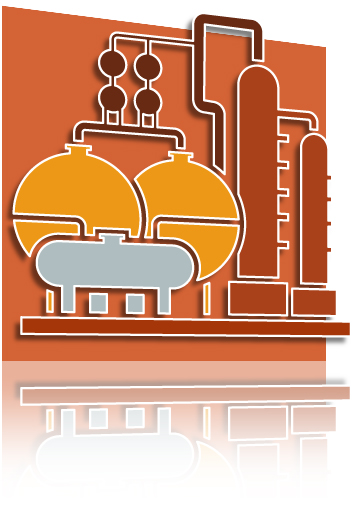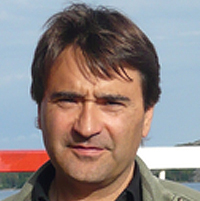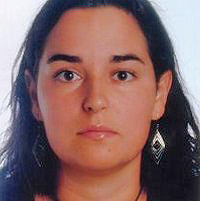Chemical Process Design / Diseño de Procesos Químicos (2017)
Diagrama de temas
-
Chemical engineers are problem-solvers who have a science, engineering and business background. Do you want to find out how they create new processes?
Teaching Faculty
Javier R. Viguri Fuente
Eva Cifrian BempostaDepartment of Chemistry and Process & Resource Engineering
About the course
-
You will learn how to create, revamp and interpret chemical process designs with emphasis on synthesis strategies.
-
Participants in this course will have the opportunity to apply modern approaches in projects to design industrial processes.
-
In this course, you will integrate the material previously learned and the management skills acquired, using preliminary design methods that provide you with a real-life engineering design experience.
- Through the use of Active Learning tactics based on “flipped classes”, team-work and a Project Based Learning approach, you will discover and apply design principles and tools for creating industry relevant processes. Continuous assessment of each methodology used will be applied.
Requirements
- This course is suitable for students who have completed the subjects of the Basic Module in the Chemical Engineering Degree. Basic knowledge of economy are not required but would be advisable.
Keywords
Process Design, Process Synthesis, Material and Heat Balance, Sustainable Design, Product Design, Sizing & Costing and Economic Evaluation, Design and Scheduling of Batch Processes.
Diseño de Procesos, Síntesis de Procesos, Balances de Materia y Energía, Diseño Sostenible, Diseño de Producto, Dimensionado & Costes y Evaluación Económica, Diseño y Planificación de Procesos Discontinuos.
-
-

Course Information
-
Course: Chemical Process Design / Diseño de Procesos Químicos
-
Code: G783
-
Department / Unit: Department of Chemistry and Process & Resource Engineering
-
Degree / Master’s: Degree in Chemical Engineering / Grado en Ingeniería Química
-
Faculty: School of Industrial Engineering and Telecommunications / Escuela Técnica Superior de Ingenieros Industriales y de Telecomunicación
-
ECTS credits: 6
-
Language of instruction: English
-
Instructors: Javier R. Viguri Fuente & Eva Cifrian Bemposta
 Here you can download the Course description in PDF format.
Here you can download the Course description in PDF format.
Course structure
- Topic 1. Introduction to Chemical Process System Design. Introduction to practical work.
- Topic 2. Methodology of conceptual design. Case study.
- Topic 3. Overview of process synthesis.
- Topic 4. Analysis of processes. LMB, Flash. Distillation. Absorber. Total flowsheet mass balance. Case study. Setting T&P levels, Enthalpy balances.
- Topic 5. Equipment sizing and costing: distillation columns, absorbers, compressor, refrigeration.
- Topic 6. Economic evaluation.
- Topic 7. Process synthesis: distillation sequences.
- Topic 8. Process synthesis: HENS.
- Topic 9. Design and scheduling of batch processes.
-
-

 Here you can download the Reading list in PDF format.
Here you can download the Reading list in PDF format.
Textbooks particularly recommended
-
Biegler, L.; Grossmann, I. & Westerberg, A. (1997): «Systematic methods of chemical process design». Prentice Hall.
-
Cussler, E. & Moggridge, G. (2001): «Chemical product design». Cambridge. University Press.
-
Douglas, J. (1988): «Conceptual design of chemical processes». McGraw-Hill.
-
Martin, M. (2016): «Industrial Chemical Process Analysis and Design». Elsevier.
-
Seider, W.; Seader, J.; Lewin, D. & Widadgo, S. (2010): «Product & process design principles». 3rd Ed. John Wiley & Sons.
Other textbooks with modern approaches to process design
-
Erwin, D. (2002): «Industrial chemical process design». McGraw-Hill.
-
Sinnot, R. & Towler, G. (2009): «Chemical engineering design». 5th Ed. Coulson & Richardson´s Chemical Engineering Series. Elsevier.
-
Sundmacher, K.; Kienle, A. & Seidel-Morgenstern, A. (Eds) (2005): «Integrated chemical procesess. Synthesis, operation, analysis and control». Wiley-VCH.
-
Thakore, S. & Bhatt, B. (2015): «Introduction to process engineering and design». McGraw-Hill Education.
-
Turton, R.; Bailie, R.; Whiting, W. & Shaeiwitz, J. (2003): «Analysis, synthesis and design of chemical processes». Prentice Hall PTR.
Economic aspects
-
Peter, M.; Timmerhaus, K. & West, R. (2005): «Plant design and economics for chemical engineers». 5th Ed. McGraw-Hill.
- Valle-Riestra, J. (1983): «Project evaluation in the chemical process industries». McGraw-Hill.
Rules of thumbs
-
Branan, C. (Ed.) (2005): «Rules of thumbs for chemical engineers». 4th Ed. Elsevier.
-
Jones, D. (1997): «Elements of chemical process engineering». John Wiley & Sons.
-
Ulrich, G. & Vasudevan, P. (2004): «A guide to chemical engineering process design and economics». 2nd Ed. John Wiley & Sons.
Product design
-
Achenie, L.E.K.; Gani, R. & Venkatsubramanian, V. (2003): «Computer-aided molecular design: theory and practice». Computer Aided Chemical Engineering, 12.
-
Cooper, R.G. (2002): «Winning at new products: accelerating the process from idea to finish». 3rd Ed. Perseus Publ. Cambridge, MA.
-
Cussler, E. & Moggridge, G. (2011): «Chemical product design». 2nd Ed. Cambridge. University Press.
-
Ng, K.M.; Gani, R. & Dam-Johansen, K. (2007): «Chemical product design: towards a perspective through case studies». Elsevier.
-
Wei, J. (2007): «Product engineering - Molecular structure and property». Oxford University Press.
CACHE process design case study series
CACHE Process Design Case Study Series
-
Vol 1. Separation system for recovery of ethylene and light products from a Naptha pyrolysis gas steam.
-
Vol 2. Design of an ammonia synthesis plant.
-
Vol 3. Design of an ethanol dehydrogenation plant.
-
Vol 4. Alternative fermentation processes for ethanol production and economic analysis.
-
Vol 5. Retrofit of a heat exchanger network and design of a multiproduct batch plant.
-
Vol 6. Chemical engineering optimization models with GAMS.
-
Vol 7. Design of an ethylbenzene production plant.
-
Vol 8. Nitrogen from air. (Versión on-line).
-
Vol 9. Conceptual design of second generation bioethanol production via gasification of lignocellulosic biomass.
-
Vol 10. Conceptual design of the supply chain and production facility of lignocellulosic bioethanol via hydrolysis.
-
Vol 11. Conceptual design of an aromatics plant from shale gas
Textbooks in Spanish language
-
Branan, C. (Ed.) (2000): «Soluciones prácticas para el ingeniero químico». 2ª Ed. McGraw-Hill.
-
Diaz, M. (2012): «Ingeniería de bioprocesos». Ediciones Paraninfo.
-
Happel, J. & Jordan, D. (1981): «Economía de los procesos químicos». 2ª Ed. Reverté.
-
Jimenez-Gutierrez, A. (2003): «Diseño de procesos en ingeniería química». Editorial Reverté, S.A.
-
Puigjaner, L.; Ollero, P.; De Prada, C. & Jimenez, L. (2006): «Estrategias de modelado, simulación y optimización de procesos químicos». Editorial Síntesis.
-
Ravagnani, M. & Caballero, J.A. (2012): «Redes de cambiadores de calor». Publicaciones de la Universidad de Alicante.
-
Roberts, R. (2010): «Serendipia: descubrimientos accidentales en la ciencia». Alianza Ed.
-
Sinnot, R. & Towler, G. (2012): «Diseño en ingeniería química». Editorial Reverte.
Encyclopedias and handbooks on chemical engineering
-
Kirk, R.E. & Othmer, D.F. (1961): «Enciclopedia de tecnología química». México. Unión Tipográfica Ed. Hispano-Americana.
-
Mcketta, J.J. (1976-2002): «Encyclopedia of chemical processing and design». New York. Basel Marcel Dekker, cop.
-
Ullmann, F. (1999): «Ullmann's encyclopedia of industrial chemistry». 6th Ed. Electronic release. Weinheim. Wiley-Vch.
Chemical engineering design project. Case study approach
-
Ray M. & Sneesby M. (1998): «Production of phtalic anhydride». 2nd Ed. Gordon Breach Science Publishers.
-
Ray M. & Johnston D. (1989): «The manufacture of nitric acid». Gordon Breach Science Publishers.
-
CACHE. Process Design case study series.
Other Resources
-
AIChE. American Institute of Chemical Engineers.
-
Reference documents (BREF). European IPPC Bureau (EIPPCB). European Commission's Joint Research Centre (JRC).
-
CACHE. Computer Aids for Chemical Engineering.
-
CEFIC. European Chemical Industry Council.
-
EFCE. European Federation of Chemical Engineering.
-
FEIQ. Federación Española de Ingenieros Químicos.
-
FEIQUE. Federación Empresarial de la Industria Química Española.
-
GlobalSpec. Products and services catalogue.
-
IChEME. Institution of Chemical Engineers.
-
SusChem, 2009. The European Technology Platform for Sustainable Chemistry. Reaction & Process Design.
-
TEMA. The Tubular Exchanger Manufacturers Association, Inc.
-
WCEC. World Chemical Engineering Council.
Further reading and references
-
Carrillo-Hermosilla, J.; Del Río González, P. & Könnölä, T. (2009): «Eco-innovation: when sustainability and competitiveness shake hands». Palgrave Macmillan.
-
Doherty, M. & Malone, M. (2003): «Conceptual design of distillation systems». 1st Ed. Tata McGraw Hill Education.
-
Dupont, R.; Theodore, L. & Ganesan, K. (2000): «Pollution prevention». CRC Press LLC.
-
El-Halwagi, M.M. (1997): «Pollution prevention through process integration». Academic Press.
-
Floudas, C.A.; Ciric, A.R. & Grossmann, I.E. (1986): «Automatic synthesis of optimum heat exchanger network configurations». AIChE Journal, 32 (2). Pp. 276-290.
-
Galán, B. & Grossmann, I.E. (1998): «Optimal design of distributed wastewaters treatment networks». Industrial and Engineering Chemistry Research, 37 (10). Pp. 4036-4048.
-
Galán, B. & Grossmann, I.E. (2011): «Optimal design of real world industrial wastewater treatment networks». European Symposium on Computer-Aided Process Engineering ESCAPE-21. E.N. Pistikopoulos, M.C. Georgiadis & A.C. Kokossis (Editors).
-
Graedel, T. & Howard-Grenville, J.A. (2005): «Greening the industrial facility». Springer.
-
Grossmann, I.E. & Guillén-Gosálbez, G. (2010): «Scope for the application of mathematical programming techniques in the synthesis and planning of sustainable processes». Computers and Chemical Engineering, 34. Pp. 365-1376.
-
Hendrickson, C.; Lave, L. & Matthews, S. (2006): «Environmental life cycle assessment of goods and services». RFF.
-
Joback, K.G. & Reid, R.C. (1987): «Estimation of pure-component properties from group contributions». Chemical Engineering Communications, 57. Pp. 233-243.
-
Kemp, I. (2007): «Pinch analysis and process integration». 2nd Ed. Elsevier.
-
Korevaar, G.; Harmsen, G. & Lemkowitz, S. (2005): «Sustainable technology». TUDelft.
-
Majozi, T. (2010): «Batch chemical process integration. Analysis, synthesis and optimization». Springer.
-
Nakamura, S. & Kondo, Y. (2009): «Waste input-output analysis. Concepts and Application to Industrial ecology». Springer.
-
Ng, K.; Gani, R. & Dam-Johansen, K. (Eds.) (2007): «Chemical product design: toward a perspective through case studies». Elsevier.
-
Nhakore, S.B. & Bhatt, B.I. (2007): «Introduction to process engineering and design». 1st Ed. Tata McGraw Hill Education.
-
Nimitz, J. & Skaggs, S. (1992): «Estimating tropospheric lifetimes and ozone-depletion potentials of one-and two-carbon hydrofluorocarbons and hydrochlorofluorocarbons». Environmental Science and Technology, 26 (4). Pp. 639-744.
-
OECD (2009): «Eco-innovation in Industry. Enabling green growth».
-
Papoulias, S. & Grossmann, I.E. (1983a): «A structural optimization approach in process synthesis-I: utility systems». Computer and Chemical Engineering, 7. P. 695.
-
Papoulias, S. & Grossmann, I.E. (1983b): «A structural optimization approach in process synthesis-I: heat recovery network». Computer and Chemical Engineering, 7. P. 707.
-
Papoulias, S. & Grossmann, I.E. (1983c): «A structural optimization approach in process synthesis-III: total processing systems». Computer and Chemical Engineering, 7. P. 723.
-
Poling, B.; Prausnitz, J. & Connell, J. (2001): «Properties of gases and liquids». 5th Ed. NY. McGraw-Hill.
-
Seader, J.D. & Westerberg, A.W. (1977): «A combined heuristic and evolutionary strategy for synthesis of simple separation sequences». AIChE Journal, 23. P. 951.
-
Smith, R.M. (2005): «Chemical process: design and integration». John Wiley & Sons.
-
Treybal, R. (1980): «Mass transfer operations». 2nd Ed. McGraw Hill.
-
Tyler Miller, G. (2007): «Living in the environment: principles, connections, and solutions». 15th Ed. Thomson.
-
Van Krevelen, D.W. (1990): «Properties of polymers». Elsevier, Amsterdam.
-
Yee, T. & Grossmann, I. (1990): «Simultaneous optimization models for heat integration-II. Heat exchangers networks synthesis». Computers and Chemical Engineering, 14, 10. Pp. 1165-1184.
-

Unit I. Introduction
-
 MC-F-001. Topic 1. Introduction to Chemical Process System Design.
MC-F-001. Topic 1. Introduction to Chemical Process System Design. -
 MC-F-002. Topic 2. Methodology of conceptual design.
MC-F-002. Topic 2. Methodology of conceptual design.
Unit II. Generation, analysis and evaluation of preliminary designs
-
 MC-F-003. Topic 3.1. Overview of process synthesis.
MC-F-003. Topic 3.1. Overview of process synthesis.-
 . Video Lecture 3.1. Sections 1 and 2. Overview of process synthesis.
. Video Lecture 3.1. Sections 1 and 2. Overview of process synthesis. -
 . Video Lecture 3.1. Section 2.2. Representing alternatives. Basic steps in flowsheet synthesis.
. Video Lecture 3.1. Section 2.2. Representing alternatives. Basic steps in flowsheet synthesis. -
 . Video Lecture 3.1. Section 2.3. Criteria for assessing preliminary design.
. Video Lecture 3.1. Section 2.3. Criteria for assessing preliminary design. -
 . Video Lecture 3.1. Section 3.1. Generation of flowsheets. Hierarchical decomposition.
. Video Lecture 3.1. Section 3.1. Generation of flowsheets. Hierarchical decomposition. -
 . Video Lecture 3.1. Section 3.2. Process integration and intensification.
. Video Lecture 3.1. Section 3.2. Process integration and intensification.  . Video Lecture 3.1. Sections 3.3 and 4. Superstructure optimization. Further reading and references.
. Video Lecture 3.1. Sections 3.3 and 4. Superstructure optimization. Further reading and references.
-
 MC-F-010. Topic 3.2. Overview of process synthesis. Examples.
MC-F-010. Topic 3.2. Overview of process synthesis. Examples. MC-F-011. Topic 3.3. Introduction to sustainable design.
MC-F-011. Topic 3.3. Introduction to sustainable design.
-
 MC-F-012. Topics 4.1. to 4.3. Analysis of process. Material and heat balances.
MC-F-012. Topics 4.1. to 4.3. Analysis of process. Material and heat balances.
-
 MC-F-014. Topic 4.4. Nomenclature. Mixer.
MC-F-014. Topic 4.4. Nomenclature. Mixer.
-
 MC-F-016. Topic 4.5. Splitter.
MC-F-016. Topic 4.5. Splitter.
-
 MC-F-018. Topic 4.6. Reactor.
MC-F-018. Topic 4.6. Reactor.
-
 MC-F-020. Topic 4.7. Flash.
MC-F-020. Topic 4.7. Flash.
 MC-F-025. Topic 4.11. Case study.
MC-F-025. Topic 4.11. Case study.
-
 MC-F-026. Topic 5.1. Equipment sizing and costing. Introduction.
MC-F-026. Topic 5.1. Equipment sizing and costing. Introduction.
-
 MC-F-029. Topic 5.2. Vessels and reactors.
MC-F-029. Topic 5.2. Vessels and reactors.
-
 MC-F-031. Topic 5.3. Heat transfer equipment.
MC-F-031. Topic 5.3. Heat transfer equipment.
-
 MC-F-033. Topic 5.4. Distillation and absorption.
MC-F-033. Topic 5.4. Distillation and absorption.
-
 MC-F-035. Topic 5.5. Compressors and turbines.
MC-F-035. Topic 5.5. Compressors and turbines.
-
 MC-F-037. Topic 5.6. Pumps.
MC-F-037. Topic 5.6. Pumps.
-
 MC-F-039. Topic 5.7. Refrigeration.
MC-F-039. Topic 5.7. Refrigeration.
-
 MC-F-041. Topic 5.8. Final summary sizing and costing.
MC-F-041. Topic 5.8. Final summary sizing and costing.
-
 MC-F-043. Topic 6.1. Cost estimation.
MC-F-043. Topic 6.1. Cost estimation.
Unit III. Basic concepts in process synthesis
-
 MC-F-049. Topic 7. Process synthesis: distillation sequences.
MC-F-049. Topic 7. Process synthesis: distillation sequences. -
 MC-F-051. Topic 8. Process synthesis: Heat Exchangers Network Synthesis (HENS).
MC-F-051. Topic 8. Process synthesis: Heat Exchangers Network Synthesis (HENS).
Unit IV. Batch processes
-
 MC-F-056. Topic 9. Design and scheduling of batch processes.
MC-F-056. Topic 9. Design and scheduling of batch processes.
-
-

Design Project
Memo I
Memo II
Memo III
Oral Presentation
-
PR-F-009. Guidelines for oral presentation.
-
PR-F-010. Rubric oral presentation (with self-evaluation).
Evaluation
-
PR-F-011. Co-evaluation Rubric.
Design Project (General Information)
-
PR-F-012. Physical Properties Reid (et al.) (Excel file).
-
PR-F-013. Aspen Equipment Symbols.
-
-

Sample exams
Assessment criteria
-
 Here you can download the Assessment criteria in PDF format.
Here you can download the Assessment criteria in PDF format.
GRADING
POINTS
-
Exam(s)
-
Memo 1 + Memo 2 + Memo 3
-
Oral Presentation (Full project) + Seminars
--------------------------------------------------------------------
-
TOTAL
40
48
12
-----------
100
- The minimum average mark required for both midterm exams will be 4 out of 10 in order to access the continuous assessment method. In order to be able to consider the mark of the Memos and Seminars it is necessary to attend the scheduled Conferences, attend at least 90% of the practical classes and submit the work on the dates indicated.
-
Due to the characteristics of the Process Design Course, a student Trade Management* approach is required.
* Business process by which manufacturing companies manage their trade promotions, budgets, claims and deductions, and indirect sales.
-
-
-


Javier R. Viguri Fuente
Department of Chemistry and Process & Resource Engineering
UNIVERSIDAD DE CANTABRIA
More information
Eva Cifrian Bemposta
Department of Chemistry and Process & Resource Engineering
UNIVERSIDAD DE CANTABRIA
More information-
Página
